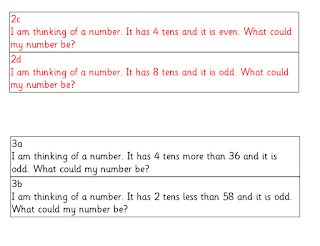This week in
English we have been continuing our learning using story The Bee’s Treasure.
On Monday we
thought about
|
Ask your child what their dream would be?
The
word ‘would’ came up in our writing this week and some children still find it
tricky to spell. Practise spelling
could, should and would remembering the mnemonic ‘Oh you lucky duck’
| On Tuesday we
made lolly stick puppets and then retold the story of The Bee’s Treasure using
our puppets and
storymaps.
Get your child to tell you the story at home.
On Thursday we
worked as a class thinking about how we could use the structure of The Bee’s Treasure but also change
parts. We kept the bee as the main
character and treasure at the end.
We used these
questions to change our stories.
Who
is the main character?
Who
do they tell about their dream?
What
does the bee lead them to?
Where
do they follow the bee to?
What
do they pass?
What
is the news when they get home?
Where
do they find the bee’s treasure?
On Friday we planned
our own stories using the boxing up sheet.
Some of us tried
to challenge ourselves by adding expanded noun phrase to our plan.
Ask your child about their story and they may like to
tell it to you several times over the weekend so on Monday they are ready to
write their story.
In phonics this
week we have been recapping the digraphs oa, oe, ow and the split digraph
o-e.
Practise writing sentences with these digraphs in.
In
maths this week, we have been learning the small steps that we can ‘add to our
toolkit’ as we progress with our addition and subtraction.
On
Monday, we revisited fact families. This means that we if know one calculation
we know 4 more. Here is an example:
We
have also challenged ourselves to start with one ‘part’ or ‘whole’ and then
calculate what that is equal to.
It
really helps children’s understanding if they can use physical objects to see
the ‘parts’ and the ‘whole’. Here
is an example that you could try at home.
On
Tuesday we practised checking calculations using different resources and
strategies. Again, this will be an essential skill for the children to use as
they progress to more tricky calculations and it is important that they can see
how this strategy can help them. We made a list of strategies and resources
that we can use and these include:
·
Does it look right?
·
Using the inverse
·
Using known number facts
·
Partitioning the numbers into tens and ones and adding each,
then recombining
·
Partition one number and ‘bridge’ through ten
·
Recording it as a part-part-whole picture
·
Recording it as a bar model
·
Using a blank number line
We
then tried out our preferred strategies with some calculations.
The
next day we used our learning about place value to find a number. Here are some examples for you
to try at home.
Another
variation, that you could try at home, is to play the yes/no game with your child. One of you
thinks of the number, the other asks questions, but the answers can only be yes
or no. See how many questions your child needs to find the answer!
We
have also been comparing number sentences. For example, if I know 3 + 4 = 7 I
also know:
·
3 + 5 = 8, because 5 is one more than 5
·
30 + 40 = 70, because that is 3 and 4 lots of 10
We
can use this strategy to answer questions, rather than calculating. Here are some examples for you
to try at home.
We
have also been practising our number facts, especially number bonds of 10.
Please continue to practise this at home as we are trying to improve the children’s’
mathematical fluency to help them calculate efficiently. Having instant recall number
facts helps! We have been playing ‘pass it on’. One child picks a number, the
next says the number to make ten, and then ‘passes’ another number to the next
child. We are trying to do this as quickly as possible. Next week we will be using these skills to start adding and subtracting 1 and 10, and then after half term we will be adding and subtracting any 2-digit number from any 2-digit number.
In science this
term we have been learning about habitats.
We have learnt about local, micro and world habitats. All living
things live is a habitat that is safe and provides food and shelter.
Follow the
links to find out more about the different habitats. https://www.bbc.co.uk/bitesize/topics/zx882hv
Ask your child what their favourite habitat is
and what living things live there and get them to explain their reasons why?
Enjoy your weekend.
The Year Two Team
|










